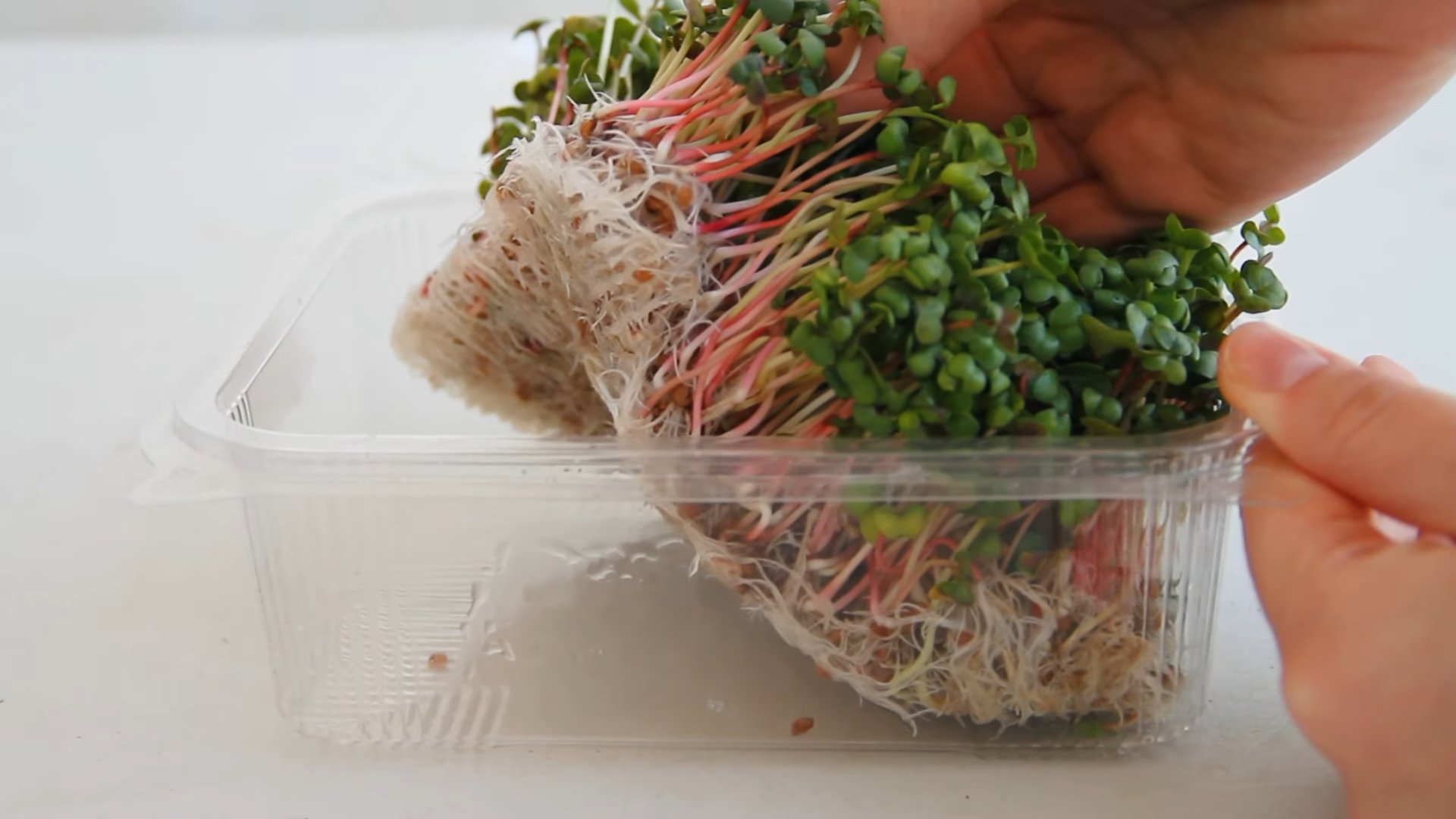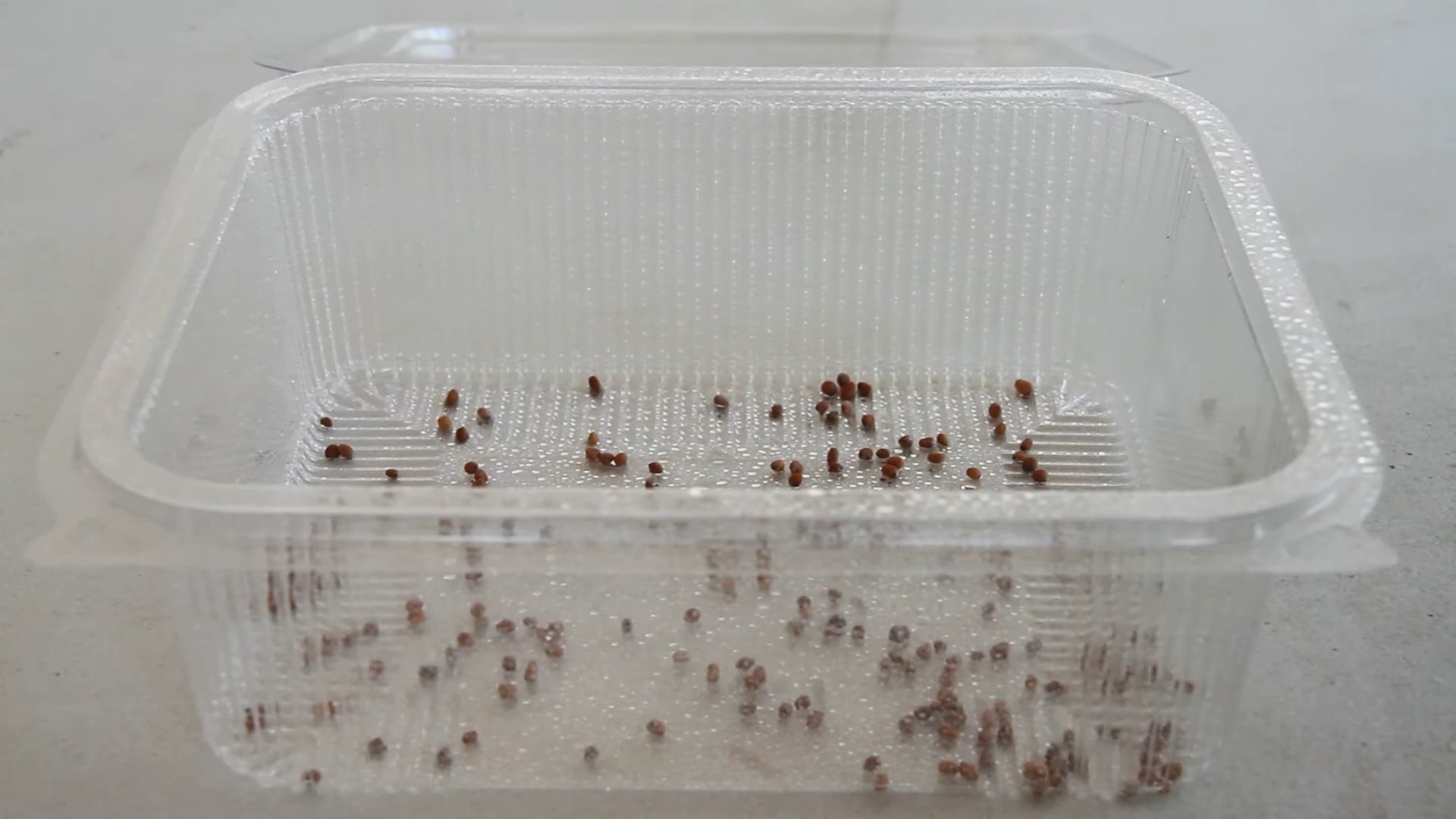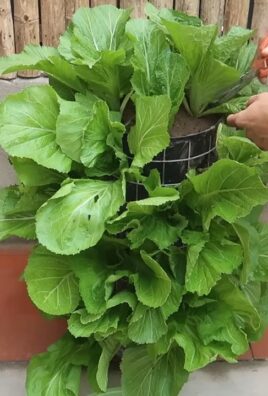Grow Microgreens at Home – and unlock a world of flavor and nutrition right on your windowsill! Have you ever wondered how chefs manage to add those vibrant, tiny greens to your plate, bursting with intense flavor? Well, the secret is out, and it’s easier than you think to cultivate these little powerhouses yourself.
For centuries, various cultures have appreciated the concentrated goodness of young sprouts. From ancient Chinese medicine utilizing sprouted grains to modern-day health enthusiasts embracing the microgreen trend, the appeal of these nutrient-packed seedlings is undeniable. I’ve always been fascinated by the idea of bringing the garden indoors, and microgreens are the perfect solution, especially if you’re short on space or live in an urban environment.
Why should you bother learning to grow microgreens at home? Because they offer a fantastic way to boost your diet with vitamins, minerals, and antioxidants, all while adding a delightful crunch and visual appeal to your meals. Plus, let’s be honest, there’s something incredibly satisfying about nurturing something from seed to plate. In this article, I’ll share my favorite DIY tricks and hacks to help you successfully grow microgreens at home, even if you don’t have a green thumb. Get ready to transform your kitchen into a mini-farm and enjoy the freshest, most flavorful greens imaginable!

Grow Your Own Delicious Microgreens: A Beginner’s Guide
Hey there, fellow foodies and green thumbs! I’m so excited to share my experience with growing microgreens at home. It’s incredibly easy, rewarding, and a fantastic way to add a burst of flavor and nutrients to your meals. Plus, it’s a project that even those of us with limited space can tackle!
What are Microgreens, Anyway?
Microgreens are basically baby vegetable greens, harvested just after the cotyledon leaves (the first leaves that emerge from the seed) have developed. They’re smaller than baby greens but larger than sprouts, and they pack a serious punch of flavor and nutrients. Think of them as tiny powerhouses of goodness! You can grow all sorts of things as microgreens, from broccoli and radish to sunflower and peas.
Why Grow Microgreens at Home?
Honestly, the reasons are endless! Here are a few of my favorites:
* Freshness: You can’t beat the freshness of harvesting your own microgreens right before you eat them.
* Flavor: Microgreens have intense, concentrated flavors that can really elevate your dishes.
* Nutrient-Rich: They’re packed with vitamins, minerals, and antioxidants. Some studies even suggest they have higher nutrient levels than their mature counterparts.
* Easy and Quick: They’re super easy to grow and ready to harvest in just a week or two.
* Space-Saving: You don’t need a garden! Microgreens thrive indoors in small containers.
* Cost-Effective: Growing your own is much cheaper than buying them at the store.
* Year-Round Growing: You can grow them indoors any time of year, regardless of the weather outside.
Getting Started: What You’ll Need
Okay, let’s gather our supplies. The good news is, you probably already have some of these things lying around!
* Seeds: This is the most important part! Choose high-quality seeds specifically labeled for microgreens. Avoid seeds treated with fungicides or other chemicals. Some popular choices include:
* Broccoli
* Radish
* Sunflower
* Pea shoots
* Mustard
* Arugula
* Kale
* Cress
* Growing Trays: You’ll need two trays: one with drainage holes and one without. The tray with drainage holes will hold your growing medium and seeds, while the tray without will act as a water reservoir. You can buy trays specifically designed for microgreens, or repurpose plastic containers like takeout containers or nursery flats. Just make sure they’re clean!
* Growing Medium: I prefer using a soilless mix like coconut coir or a seed starting mix. These mediums are lightweight, retain moisture well, and are less prone to mold growth than regular soil. You can also use a hydroponic grow mat.
* Spray Bottle: For misting your microgreens.
* Water: Filtered water is best.
* Light Source: Microgreens need light to grow. A sunny windowsill can work, but a grow light will provide more consistent and reliable results. I use a simple LED shop light.
* Weight (Optional): A small weight, like a book or a brick wrapped in plastic, can help the seeds germinate evenly.
* Scissors or Knife: For harvesting.
Step-by-Step Guide to Growing Microgreens
Alright, let’s get our hands dirty (well, not really, since we’re using soilless mix!). Here’s my step-by-step guide to growing delicious microgreens at home:
1. Preparing the Growing Tray
1. Clean Your Trays: Start by thoroughly cleaning your growing trays with soap and water to prevent any contamination.
2. Add Growing Medium: Fill the tray with drainage holes with your chosen growing medium. Aim for a depth of about 1-2 inches.
3. Moisten the Medium: Gently moisten the growing medium with water until it’s evenly damp, but not soggy. You should be able to squeeze it without water dripping out.
2. Sowing the Seeds
1. Sow Seeds Densely: Sprinkle the seeds evenly over the surface of the moistened growing medium. Don’t be afraid to sow them densely, as microgreens are grown close together. The amount of seeds you use will depend on the type of seed and the size of your tray. A good rule of thumb is to aim for about 1/4 inch between seeds.
2. Gently Press Seeds: Gently press the seeds into the growing medium to ensure good contact.
3. Mist with Water: Lightly mist the seeds with water to keep them moist.
3. Germination Phase: Darkness is Key
1. Cover the Seeds: Cover the tray with a lid or another tray to create a dark and humid environment. This helps the seeds germinate evenly.
2. Weigh it Down (Optional): Place a light weight on top of the lid or tray to further encourage even germination.
3. Keep it Dark: Place the tray in a dark, cool place (around 60-70°F) for 2-3 days, or until the seeds have germinated.
4. Check Daily: Check the tray daily to make sure the growing medium is still moist. Mist with water if needed.
4. The Light Phase: Green is Good!
1. Remove the Cover: Once the seeds have germinated and you see tiny sprouts emerging, remove the cover and weight.
2. Introduce Light: Place the tray under a grow light or in a sunny windowsill. If using a grow light, position it a few inches above the microgreens.
3. Water from Below: Pour water into the bottom tray (the one without drainage holes). The growing medium will absorb the water from below, which helps prevent mold growth.
4. Rotate the Tray: If using a windowsill, rotate the tray daily to ensure even light exposure and prevent the microgreens from leaning towards the light.
5. Maintain Moisture: Continue to water from below as needed, keeping the growing medium consistently moist but not soggy. You may also need to mist the microgreens occasionally to keep them hydrated.
5. Harvesting Your Microgreens
1. Harvest Time: Your microgreens are ready to harvest when they have developed their cotyledon leaves (the first leaves) and possibly their first set of true leaves (the second set of leaves). This usually takes about 7-14 days, depending on the type of microgreen.
2. Harvesting Technique: Use scissors or a sharp knife to cut the microgreens just above the growing medium.
3. Wash and Enjoy: Gently wash the harvested microgreens and enjoy them immediately! You can store them in the refrigerator for a few days, but they’re best when fresh.
Troubleshooting Tips
Even with the best intentions, sometimes things can go wrong. Here are a few common problems and how to fix them:
* Mold Growth: Mold can be a problem if the growing medium is too wet or there isn’t enough air circulation. To prevent mold, make sure to use a well-draining growing medium, avoid overwatering, and provide good air circulation. If you see mold, you can try spraying the affected area with a diluted hydrogen peroxide solution (1 part hydrogen peroxide to 10 parts water).
* Leggy Microgreens: Leggy microgreens are tall and spindly, with long stems and small leaves. This is usually caused by insufficient light. Make sure your microgreens are getting enough light, either from a grow light or a sunny windowsill.
* Uneven Germination: Uneven germination can be caused by uneven watering, uneven seed distribution, or temperature fluctuations. Make sure to water evenly, sow seeds evenly, and maintain a consistent temperature.
* Slow Growth: Slow growth can be caused by a variety of factors, including insufficient light, low temperatures, or poor-quality seeds. Make sure your microgreens are getting enough light and warmth, and use high-quality seeds.
Creative Ways to Use Your Microgreens
Now for the fun part: eating your delicious microgreens! Here are just a few ideas to get you started:
* Salads: Add them to salads for a burst of flavor and nutrients.
* Sandwiches and Wraps: Sprinkle them on sandwiches and wraps for extra crunch and flavor.
* Soups: Garnish soups with microgreens for a pop of color and freshness.
* Smoothies: Blend them into smoothies for a nutrient boost.
* Omelets and Scrambled Eggs: Add them to omelets and scrambled eggs for a healthy and flavorful breakfast.
* Pizza: Sprinkle them on pizza after baking for a fresh and vibrant topping.
* Tacos: Use them as a garnish for tacos.
* Avocado Toast

Conclusion
So, there you have it! Growing microgreens at home is not only incredibly easy and rewarding, but it’s also a fantastic way to boost your nutrient intake and add a burst of fresh flavor to your meals. Forget those expensive, pre-packaged containers from the grocery store – with just a few simple supplies and a little bit of patience, you can cultivate your own thriving microgreen garden right on your windowsill.
The beauty of this DIY project lies in its versatility. Experiment with different seed varieties to discover your favorite flavor profiles. Radish microgreens offer a peppery kick, while broccoli microgreens are mild and slightly sweet. Sunflower microgreens provide a nutty taste and a satisfying crunch. Don’t be afraid to mix and match seeds for a custom blend that perfectly complements your culinary creations.
Beyond the seed selection, you can also play around with the growing medium. While soil is a reliable option, you can also use coco coir, hemp mats, or even paper towels. Each medium offers slightly different moisture retention and drainage properties, so experiment to see what works best for you and your chosen microgreen varieties.
Consider the lighting too. While a sunny windowsill is often sufficient, especially during the warmer months, you might want to supplement with a grow light, particularly during the winter. This will ensure that your microgreens receive adequate light for optimal growth and vibrant color.
Growing microgreens at home is a game-changer for anyone looking to eat healthier, save money, and connect with the natural world. It’s a simple yet profound way to bring the garden indoors and enjoy the freshest possible produce, regardless of the season.
We wholeheartedly encourage you to give this DIY trick a try. It’s a fun and educational project for the whole family, and the results are undeniably delicious. Once you’ve harvested your first batch of homegrown microgreens, you’ll be hooked!
Don’t forget to share your experiences with us! We’d love to see photos of your microgreen gardens and hear about your favorite seed varieties and growing techniques. Tag us on social media or leave a comment below – we’re eager to learn from your successes and help you troubleshoot any challenges you might encounter. Let’s build a community of microgreen enthusiasts and spread the word about this amazing way to grow fresh, nutritious food at home. Embrace the power of growing microgreens at home and transform your kitchen into a miniature urban farm!
Frequently Asked Questions (FAQ)
What exactly are microgreens?
Microgreens are young vegetable greens that are harvested just after the cotyledon leaves (the first leaves that emerge from the seed) have developed, and sometimes after the first true leaves have appeared. They are typically about 1-3 inches tall and are packed with flavor and nutrients, often more so than their mature counterparts. Think of them as baby versions of your favorite vegetables and herbs.
What types of seeds can I use to grow microgreens?
The possibilities are vast! Popular choices include:
* **Brassicas:** Broccoli, cauliflower, kale, cabbage, radish, arugula, mustard
* **Legumes:** Peas, lentils, chickpeas
* **Asteraceae:** Sunflower, lettuce, endive, radicchio
* **Apiaceae:** Carrot, celery, dill, fennel
* **Amaranthaceae:** Amaranth, quinoa, beet, spinach, chard
Avoid using seeds that have been treated with fungicides or other chemicals, as these are not safe for consumption. Opt for organic seeds whenever possible. Also, avoid using seeds from the nightshade family (tomatoes, peppers, eggplant) as microgreens, as they can be toxic.
What kind of container should I use?
You can use almost any shallow container with drainage holes. Recycled plastic containers, seedling trays, or even repurposed takeout containers work well. Just make sure the container is clean and has adequate drainage to prevent waterlogging. You can also purchase dedicated microgreen growing trays online or at garden centers.
What kind of soil should I use?
A good quality potting mix is ideal. Look for a mix that is well-draining and contains a blend of peat moss, perlite, and vermiculite. You can also use coco coir or hemp mats as a growing medium. Avoid using garden soil, as it can be too heavy and may contain pests or diseases.
How much light do microgreens need?
Microgreens need plenty of light to grow properly. A sunny windowsill that receives at least 4-6 hours of direct sunlight per day is often sufficient. However, if you don’t have access to a sunny windowsill, or if you’re growing microgreens during the winter months, you may need to supplement with a grow light. LED grow lights are energy-efficient and provide the ideal spectrum of light for plant growth.
How often should I water my microgreens?
Keep the soil consistently moist, but not soggy. Water gently from the bottom by placing the container in a tray of water and allowing the soil to absorb the moisture. Avoid overwatering, as this can lead to mold growth. Check the soil moisture daily and water as needed.
How long does it take for microgreens to grow?
The growing time varies depending on the seed variety, but most microgreens are ready to harvest in 7-14 days. You’ll know they’re ready when the cotyledon leaves are fully developed and the first true leaves have emerged.
How do I harvest microgreens?
Use sharp scissors or a knife to cut the microgreens just above the soil line. Rinse them gently with water and pat them dry before using.
How long do microgreens last after harvesting?
Microgreens are best consumed fresh, but they can be stored in the refrigerator for up to a week. Place them in a sealed container lined with a paper towel to absorb excess moisture.
Can I regrow microgreens after harvesting?
Unfortunately, microgreens cannot be regrown after harvesting. Once you’ve cut them, the plant is finished. However, you can easily start a new batch of seeds to have a continuous supply of fresh microgreens.
What if I see mold growing on my microgreens?
Mold growth is usually caused by overwatering or poor ventilation. If you see mold, remove the affected area immediately. Improve ventilation by placing a fan near the microgreens. Avoid overwatering in the future. You can also try spraying the microgreens with a diluted solution of hydrogen peroxide and water (1 part hydrogen peroxide to 10 parts water).
Are there any microgreens I should avoid growing?
As mentioned earlier, avoid growing microgreens from the nightshade family (tomatoes, peppers, eggplant), as they can be toxic. Also, be cautious with certain bean varieties, as some may contain toxins that are only neutralized when cooked. Always research the specific seed variety before growing it as a microgreen.
Can I use fertilizer when growing microgreens?
Fertilizer is generally not necessary when growing microgreens, as they are harvested at a very young stage and don’t require a lot of nutrients. The nutrients in the potting mix are usually sufficient.
What are the benefits of growing microgreens at home?
Growing microgreens at home offers numerous benefits, including:
* **Fresh, nutritious food:** Microgreens are packed with vitamins, minerals, and antioxidants.
* **Cost savings:** Growing your own microgreens is much cheaper than buying them from the store.
* **Convenience:** You can have fresh microgreens on hand whenever you need them.
* **Sustainability:** Growing your own food reduces your carbon footprint.
* **Educational:** It’s a fun and educational project for the whole family.
* **Flavor enhancement:** Microgreens add a burst of fresh flavor to your meals.




Leave a Comment